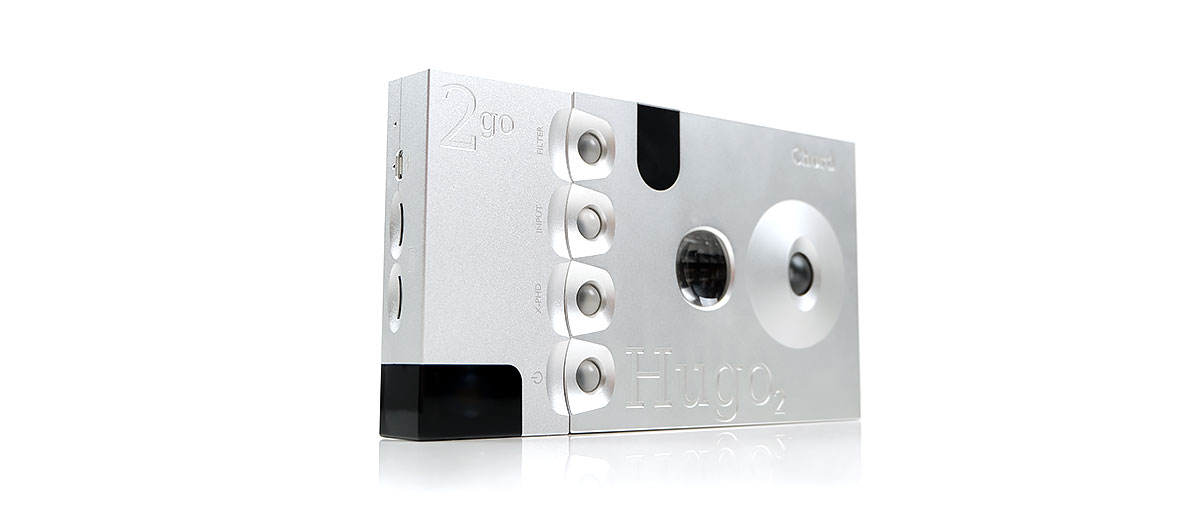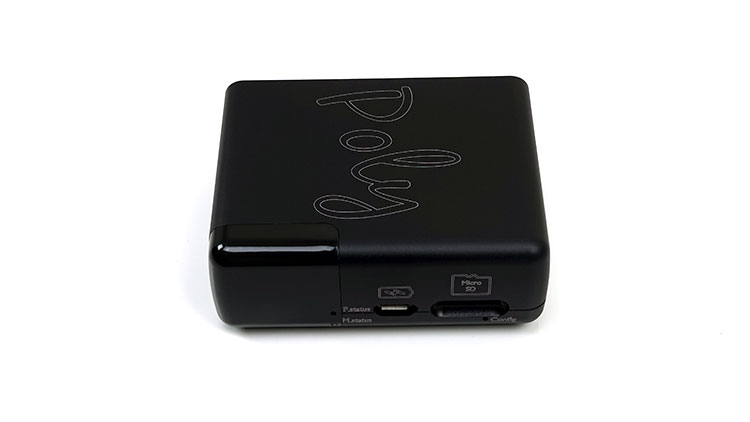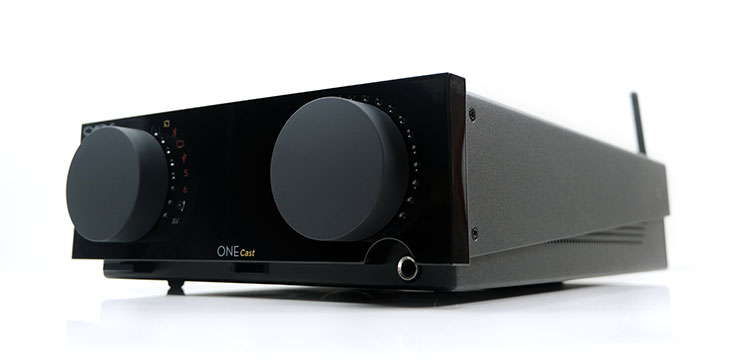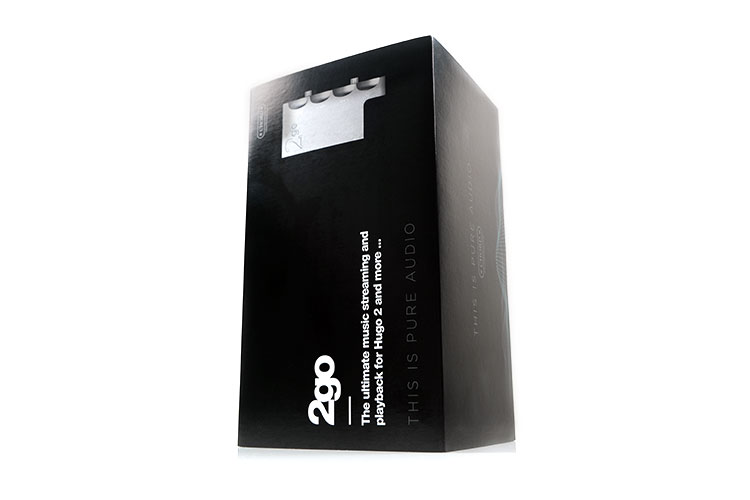Select Comparisons
Chord Electronics Poly
£499.00
Technical
The Poly is the little sibling of the 2go and the first Chord wireless-focused product on the market at the end of 2019. It is much smaller than the 2go but designed to fit seamlessly with the compact Mojo portable amp/DAC in much the same way as the 2go does with the larger Hugo 2.
Unlike the 2go, the Poly only offers wireless connectivity, either via WiFi or Bluetooth, it does not have a gigabit ethernet option. Both do have the same protocols for WiFi at 2.4gHz as well as BT at 4.1 AD2P with SBC and ACC decoding compatibility. Neither offers 5Ghz short-range faster protocols for wireless.
The Poly also lacks a dual storage functionality with only 1 MicroSD slot compared to the two on the 2go. However, the 2go can only access one slot at a time with switching via Go Figure.
Speaking of Go Figure, you will find more music services options when paired with the Poly but that 2go auto-switching feature renders have to switch from one service to another redundant.
Battery life is fairly similar at 9 hours from the smaller 2200mAh rated battery inside the Poly compared to around a slightly longer 10 hours from the 2850mAh rated batter inside the 2go.
Bear in mind though if you are pairing with their respective portable players, the useful battery life will be restricted by the DAC/amp’s rating. That changes things with the Mojo rated at a higher 8 hours compared to just 7 from the Hugo 2.
Streaming Performance
I could not find any tangible difference between either the 2go or the Poly in terms of WiFi stability and range when connected within our network system at our office. We use a network-provided router and a TPLink Deco M5 network bridge system which I find much more stable than trying to connect directly to the rather cheap-looking router.
Also, if you do have both the Poly and the 2go already set up on the same network then you can actually control both devices at the same time via 3rd party UPnP app such as BubbleUPnP. That means you can change from Poly to 2go for access to stored media and rendering receiver direct from a single app.
This is ironic because Go Figure can only see one device at a time. I would much prefer to have Go Figure see and manage multiple wireless devices in the same manner.
What the Poly does lack is that auto-switching feature which might not seem a huge deal but for Roon/DLNA or streaming users having to go into Go Figure every time to switch from Roon to “Other music services’ can be fatiguing.
Bluetooth is more of a bonus component for the Poly/Mojo than it is for the Hugo 2/2go combo. Granted you need it to set up and connect both wireless modules to a WiFi network but beyond that the Hugo 2 has its own BT module and a more capable one at that at up to aptX capability for audio.
The Mojo does not have a built-in BT module so the Poly’s additional BT capability is a more welcome addition if you have no direct WiFi access. However, the Poly is only SBC and ACC capable so dynamic range and resolution are below aptX performance levels.
Audio Performance
You cannot really speak of the audible differences between the Poly and the 2go without actually describing the differences between the Mojo and the Hugo 2.
The Mojo/Poly combo tonal coloration is a bit more colored for me compared to the more resolving and accurate sounding Hugo 2/2go pairing. Both are natural performers but if I had to sum the Mojo/Poly sound it is more bass-centered with a deep soundstage but also one that is less holographic compared to the Hugo 2/2go.
What does the Hugo 2 do that is better? Additional output power means a better dynamic range for me and better energy with more demanding headphones. This is also a more coherent presentation as well as offering a superior level of detail. I also find the Hugo 2 just to be that bit more accurate with its staging, timbre, and imaging.
The Mojo is more relaxed and ‘fun’ in comparison. I love the low end of the Mojo. It’s got a really nice PRaT and in some ways retains the spirit of the Hugo 1’s fuller low end but not quite as soft.
The Hugo 2/2go is the more linear and balanced sounding of the two combos. It offers superior instrumental separation, a wider stereo image, and more headroom compared to the Mojo/Poly.
You can also give the Hugo 2 a little more “Mojo” flavor with X-PHD, especially the digital filter 03 which puts a dash of additional warmth and a slightly smoother denser sound.
With its dedicated analog outs and that more resolving output the Hugo2/2go use case goes beyond purely portable. It would not be out of place connected to a high-end desktop amplifier as a wireless desktop DAC.
Cyrus Audio One Cast
The One Cast is an all-in-one device so our comparison will use the 2go and Hugo 2 as a combination rather than just the 2go alone. Separately, they retail at £1,800 for the Hugo 2 and £995 for the 2go so together they are roughly around $3,800 or about $800 more than the Cyrus One Cast.
$1999
2go
Unlike the One Cast, 2gO does not have built-in Chromecast support so it is not compatible with Google Home or uses voice activation but it does have its own dedicated app called Go Figure.
The 2gO is certified Roon Ready via USB which the One Cast is not, however, it will stream just fine with Roon’s Chromecast compatibility showing the One Cast under the audio tab. Just to note, however, streaming via Roon Chromecast is capped at 96kHz/24BIT whereas there is 2go has no such restriction.
On the hardware side, the 2go WiFi is only 2.4GHz compatible whereas the One Cast offers both 2.4GhHz and 5GHz giving it both long-range and short-range compatibility and better data transfer speeds.
However, the 2go does offer LAN Gigabit connectivity and can store and serve local media files locally via 2 microSD memory card slots which the One Cast does not offer.
Bluetooth on the 2gO is also the older BT4.1 serving only AD2P with ACC and SBC maximum whereas the One Cast does not specifically state what version of BT it offers but can receive up to aptX. You should consider BT on the 2gO more of a backup if you have no WiFi connection than a serious audio service.
Hugo 2
The in-house Hugo 2 Xilinx Artix 7 (XC7A15T) FPGA and FIR filter-based DAC implementation is light years ahead of the older delta-sigma 2-channel ES9018Q2M implementation inside the One Cast.
On a decoding level, the Hugo 2 can deliver up to PCM 768kHz/32BIT and DSD512 native decoding compared to the humbler DSD128 and PCM 32BIT/384kHz capability of the One Cast via USB. Via SPDIF both are the same with optical at 24BIT/192kHZ. However, with 2go attached DSD decoding on the Hugo 2 drops to DSD256, (over DoP).
Sadly, the requisite performance data to compare like for like is missing from the Cyrus Audio documentation with only SNR at -128dBA and a maximum output of 1W per channel from the Class AB headphone amplifier on a 32Ω load being quoted. On the face of it, the SNR seems very competitive with the Hugo 2 amplifier capable of a similar SNR of 126dB ‘A’ Weighted.
The Hugo 2 headphone amplification stage is also SE only but does offer an additional 3.5mm TRS output for IEM users whereas the One Cast is 6.35mm TRS only. Topologies differ, with the Hugo 2 using a Class A solid-state design though its output power is lower at 740mW into a 32Ω load.
Both have single-ended pre-outs (analog out) but neither have any dedicated rating so I have to presume they operate as a standard 2V or 2.1V lineout to analog amplifiers. The Hugo 2 does not have any speaker integration, you will need a TTOBY or their new Anni integrated amplifier add-on. It is also missing the One Cast phono stage input capability.
Design
Completely different designs and perhaps audience pitches here. The One Cast is more in sync with the Hugo TT2 as a desktop component whereas the Hugo 2 and 2go are battery-powered portable devices that can be used as a desktop component if so required.
That means the Hugo 2 and the 2gO are tiny compared to the One Cast and much more transportable. However, battery life is an issue with this combo with a max of 7-8 hours of playback before charging is required. If you plan on using the Hugo2/2gO as a desktop then its 5V USB wall wart is mandatory.
The Hugo 2 and the 2go module are solidly built, more so than the One Cast. However, like the One Cast, the Hugo 2 lacks a GUI with much of the streaming operation for the 2go via Go Figure and the One Cast via Google Home.
The simpler command and volume dials of the One Cast combined with Google Home setup are more intuitive to use than the steeper learning curve of the orb/Go Figure system for the Hugo 2 and 2go.
Streaming Performance
With Chromecast, the One Cast integrates superbly with Spotify, TIDAL, Roon, and Qobuz. You can also cast via 3rd party apps such as BubbleUPnP via the Cast icon and select One Cast as your local rendering device in combination.
The 2gO will not integrate directly with the likes of Spotify, TIDAL, and Qobuz via Go Figure but you can access apps such as Tidal via 3rd party streaming apps such as BubbleUPnP with a fair degree of control.
My main critique is the usability of Go Figure with 2gO which at times can be quite a bit more taxing than Google Home or casting directly from an app. There is a steeper learning curve with Go Figure compared to One Cast that may put some off.
Outside of that, however, the 2gO is Roon Ready so it will work right out of the box and indeed Roon picks it up right away as it does with the One Cast via Chromecast services. That gives you access to the excellent Roon Core app on your smartphone and another GUI-based navigation route for playback and settings control on the One Cast and 2go.
Of course, the main strength of 2gO is portability so 2.4Ghz is going to come more into play than required with One Cast stationary position unless your modem is quite far from the Cyrus system. On this basis, I had no issue walking around with the 2go/Hugo 2 combo in the house suffering zero dropouts, (around 15m from modem to further point in the house).
Audio Performance
On a high level, the Hugo 2/2go combo is more linear on the lows with a stronger mid-centric placement compared to the denser and weightier One Cast sound signature.
The Hugo 2/2go tonal quality is not bright or dry however, more of a slightly soft lilt on the harmonic balance to produce a relatively sweet overtone with the D8000 Pro. This also helps to take the edge of this pairing’s more aggressive attack and faster transient response.
Imaging teases out an excellent and very involving midrange on the Hugo 2/2gO with the D8000 Pro. This is a complex and articulate soundstage with a flatter but better-defined bass response You also get a superior level of instrumental separation helped along by a blacker background, and more headroom.
The One Cast delivers more bass body, weight, warmth, and power up to the lower mids. However, at times the vocal imaging sounds more neutral with the mids instrumental positioning also narrower compared to the Hugo 2 wider stereo image and vibrant clearer vocals.
The Hugo 2/2go combo will play out higher-pitched timbral tones a bit smoother also. Both have a similar treble presence and neither are overly cooked or hot sounding but the One Cast sounds a little thinner for upper mids percussion strikes. There is a subtle increase in harmonic dissonance here compared to the smoother Hugo 2.
Overall, the Hugo 2/2go will deliver a better audiophile experience in terms of dynamic range, resolution, and an accurate harmonic balance. However, if you need a bit more low-end body and weight in your sound then One Cast can give the slam and warmth more suited to pop, and R’n’B standards.
Our Verdict
The Chord Electronics 2go takes everything good about the previous Poly and upsizes it to work seamlessly with the Hugo 2.
That Mojo/Poly partnership is fantastic for on-the-go wireless streaming audio but the 2go brings not only that but also desktop or home audio integration via the more complete Hugo 2 interface.
You have a ton of streaming options at your fingertips and with that auto-switch feature you can wander from service to service without breaking a sweat. The additional onboard microSD capacity for some excellent audio performance via hotspot control.
Caveats? There are a few and some of them are beyond Chord’s control such as the quality of your router which can bottleneck hi-res streaming performance. Still, a proper 5gHz option for WiFi would not have gone amiss at this price point. The Go Figure app has come on in leaps and bounds since I reviewed the Poly but it’s still not as intuitive as Google’s Cast service.
If you are working a Hugo 2 into the partnership then the 2go BT service is redundant for audio playback since the Hugo 2 is BT aptX capable. You still need it though but consider it more of an operational feature to get set up and connected to WiFi.
Overall, the 2go is the only game in town if you want that Hugo 2 wirelessly capable for lossless audio streaming. It is not cheap but it brings a whole new and fresh dimension to the Hugo 2 experience.
Chord Electronics 2gO Specifications
- Power supply: Internal battery with up to 10 hrs (approx) playback. Desktop mode activated upon insertion of Micro USB charging cable).
- Wireless connectivity: Long-range 2.4GHz WiFi, Bluetooth 4.1 A2Dp
- WiFi modes: Connect to (allows 2go to connect to an existing 2.4GHz WiFi network) or Hotspot mode
- Wired connectivity: Gigabit (GbE) ethernet
- PCM and DSD Support: 44.1kHz – 768kHZ (16bit – 32bit) | DSD 64 to DSD 256 (via DoP)
- File format support: ACC, WAV, FLAC, AIFF, OGG VORBIS, ALAC, WMA, MP3 and more…
- Initial setup, configuration, and updates: Via free Gofigure app available on iOS and Google Play store
- Music storage: 2x Onboard Micro SD card slots (up to 4TB of total storage)
- Playback: Roon endpoint, DLNA (server and render), AirPlay, Bluetooth audio (A2DP), Tidal, Qobuz, Internet radio, and more coming…
- Gapless playback: Supported
- 2go dimension: 50mm x 100mm x 21mm
- 2go weight:155g
- 2go Hugo2 combined weight: 545g






